- Home
- Danielle Steel
A Gift of Hope: Helping the Homeless Page 8
A Gift of Hope: Helping the Homeless Read online
Page 8
In time, we added more and more items to the bags, all of which proved to be essential or at least useful for life on the streets. In addition to the warm down jackets, we added track suits, also warm, and also in three sizes like the jackets. Then we added long johns to go under the track suits. We were already giving out socks, gloves, wool beanies, and warm scarves. We researched shoes for a long time; sizes were a problem until we found an open sandal, which we bought in three sizes too. Hand warmers to slip into the gloves were a great addition and got good reviews from our clients. With the rain ponchos and waterproof tarps, we added umbrellas. We also added flashlights, notepads, and pens so they could leave messages for each other. We addressed these needs after talking to our clients. And we put in decks of cards for distraction. We put in a few small tools, like can openers, eating utensils, much later water bottles. And eventually, I realized that if any of our clients were fortunate enough to get a job interview, they had no way of cleaning up for it, so we began including hygiene supplies: combs, razors, mouthwash, toothbrushes, toothpaste, deodorant, wipes to clean their hands, shampoo, tampons. And as a quirk of my own, we added bars of really good soap. I like nice soap, and it seemed like a small luxury to offer them, instead of something more rudimentary. So within a relatively short time, with the contents of our bags, they were able to stay dry and warm, and get clean.
We had stayed away from offering them food for a long time. By distributing supplies to the homeless, we were breaking no laws. But the rules and laws about food are far more stringent. You need a license to serve or give out cooked or open food. And sadly, we learned that those laws were in place because now and then really twisted, malevolent people had poisoned homeless people with cooked food. Others had given them old food that was spoiled. So you were forbidden to give cooked or raw food to the homeless, in our city anyway. It had to be industrially packaged and sealed. Giving them food seemed complicated to me, since they had no opportunity to cook anything, warm it, or refrigerate it. Despite frequent requests, I didn’t want to branch out into food. The big black bags were already chock full, and our budget stretched. But too often, our clients were asking if we had anything to eat, and looking disappointed when we didn’t. So eventually, we began researching what food we could give them, and it turned out to be less complicated than I had feared.
The challenge was to figure out what was good to eat, nourishing, and didn’t need to be cooked or refrigerated. We bought tins of tuna fish, chicken, Spam, and assorted meats that came in cans, with a can opener, of course. We included some tins of fruit. Instant powdered soups, instant hot cereals, which needed only to add hot water, which they could find. Cold cereals, peanut butter, jelly, crackers, potato chips, beans, beef jerky, nuts, dried fruits, Power Bars, cookies, chocolate, and coffee, tea, instant hot chocolate, sugar, and powdered cream. In time, we gave them packaged food that we calculated could last for about three weeks if used judiciously. And our clients were thrilled. It made the bags heavier—we had to order bigger bags once the food was added—but it met a very real need, and no one complained about how full the bags were. And if they were too heavy, for the women for instance, the men would help carry the bags back to their cribs or camps. The addition of the food was much appreciated by all.
We got requests for water too, but that was a problem we couldn’t solve for them. Bottled water would have made the bags much too heavy, both for them and for us. Once the food was added, I already had a much harder time dragging the heavy bags out of the van, and bottled water would have made it impossible, for me and also for any of the women on the streets to carry. Although we were asked often for water, we just couldn’t supply it. So instead we gave out an empty water bottle that they could fill on their own. It was the best we could do.
Another thing we decided not to supply was any kind of medication. Although many of the people we served on the streets were sick and needed treatment for both minor and major ailments, and cough and cold remedies would have been useful, I was afraid to give them anything that someone might be allergic to and inadvertently cause greater harm. I didn’t want to take that risk. I also felt that giving medication might encourage them not to go to emergency rooms or clinics when they needed to, so we purposely didn’t put them in. All we included were bandages and antiseptic.
People knew when we were on the streets. News traveled fast, and many people had figured out our schedule and roughly when we were due out again. We covered as large an area as possible, combing most of the places where the homeless hung out and lived. We asked people where others were camping, and went looking for them in grocery-store parking lots, back alleys, under overpasses, near construction sites, in places no one would suspect that people were hiding and living. As best we could, we found them. And a lot of them found us.
One of the more useful tools and means of communication on the streets are “cell phones,” and not the kind you put in your pocket. In the language of the streets, a cell phone is a person on a bicycle who rides from one group to another, bringing news and linking people to what’s happening nearby. Thanks to the “cell phones” cycling around the areas we worked in, a lot more people heard about us and came running. We were grateful for them, as they allowed us to reach out to so many more.
The number of bags we handed out rapidly jumped from 75 to 100, to 125 and then to 150. We’d been doing it for a while when we finally upped the numbers to 200, and then to 250, and on some nights 300. You didn’t have to do anything to qualify for a bag. All you had to do was be there. People who said they needed another one for a husband, a wife, a girlfriend or boyfriend, or just a pal who was in his crib three blocks away and too sick to walk to us, were given the additional bag they said they needed. Who were we to question if what they said was true? Life was tough enough for them, without our making it more so. And to this day, I know and believe that in almost every instance, those bags were not sold to buy illegal substances or traded for them. Everyone we saw immediately opened the bags and put everything on, and ripped open the food bags with trembling hands. I saw many of those bags around the city, in the hands where they belonged, as people carried their possessions in them. For the most part, the bags stayed where they were meant to.
Theft is a bigger problem on the streets, and too often people reported to us that they had been ripped off. I can’t tell you how many times we went out and had people come running up to us in despair, saying their bag had been stolen only days before (or taken by the DPW and tossed in a garbage truck). “I knew you’d come back,” more than one said to us. “I started praying for you to come this morning. Where were you? I needed a new bag.… Thank God, you made it.” Providence seems to have shoved us out the door and onto the streets on the days we were most needed. And with impressive honesty, many times someone would shake their head with a smile, and say, “You got me last time, I’m okay.…” Or tell us they needed only a jacket but not a sleeping bag. Need is acute on the streets, but greed is rare, almost nonexistent. And time and time again, they wanted to make sure we gave something to their buddy, who they said needed it more.
I can’t say I was never afraid as scary-looking people rushed toward us. I’m not crazy, and this was an unfamiliar world to me for a long time, full of people who at times could look ominous, disoriented, or even deranged. Sometimes they were less frightening when we started to talk to them, and at other times, they became considerably worse, and more alarming. In my earliest days on the streets, on a night when several very disturbing-looking people ran up to me, I pulled myself together and thought, If Jesus came to me looking like this man, would I run? Or would I stand right where I am, face him, and embrace him? I forced myself to see Jesus in him every time I saw someone who scared me, and eventually I felt blessed, not frightened. And the people who had seemed so upsetting to me melted into the kind people, who welcomed us into their world. That vision worked for me.
To remind myself of it, I bought a nearly life-size painting at an
art fair. It was a painted cutout of a man, with the face of Jesus and a crown of barbed wire on his head, dressed in bright colors, holding a sign that says “Will work for food.” It is unnervingly lifelike, and I put it on the wall outside my bedroom, where I can see it from my bed. Many times in the moonlight, I have jumped when I saw it, thinking there was a strange man standing outside my bedroom. And then I remember what it is, and what it was meant to remind me of. I love that painting, because it reminds me of the people I see on the streets and imagine with the face of Jesus, the people who no longer scare me. It is a constant reminder of the work we loved so much.
The sad thing is that we could have given away four or five times as many of our black bags on any given night. But buying adequate supplies for three hundred bags was expensive. We just couldn’t give away more than that. I wish we could have, and still could.
The final thing we added to what we gave away was a crazy idea I had one Christmas that turned out not to be so crazy after all. There is a child in all of us, who needs to be indulged occasionally, tended to, or at least acknowledged. But clearly, these people struggling to survive on the streets don’t have time for childish pursuits. I have always had a fondness for teddy bears, and the comfort they represent. And teddy bears to me are also the spirit of Christmas. As disappointing as the holidays can be at times, there is still a child in each of us who hopes they will be different. And since our mission was one of hope, I wanted to add a teddy bear to the bags one Christmas. It brought up considerable debate among us. Was it a good idea? Wasn’t it? Was it a waste of our money? Would anyone care, or even want them? And should we put a bear in each bag or hand them out separately? Most of the men on the team thought it should be put in the bag, to be discovered later. The women thought it should be handed out, which might be more personal and human. To be honest, even I thought that probably most of the teddy bears would wind up in a trash can or the gutter. Since 90 percent of our clients were men, and all of them were pretty rough, it was hard to imagine them seeing a teddy bear and not laughing in our faces. But I wanted to do it anyway. Something in my heart made me feel that it was a gesture they needed. And it meant a lot to me. I was willing to look foolish and at least try it.
On that particular Christmas, two wonderful ladies who own a store donated three hundred small teddy bears; after that we bought them. But that first time was an experiment, and we all felt a little sheepish, but we bravely handed out a teddy bear, and said “Merry Christmas” or “Happy Holidays,” to everyone who got a bag.
None of us was prepared for the reaction. The first man we handed it to must have been about six-four, a powerful man with unkempt hair, a somber face, and an aggressive expression. He looked at us, staring at the bear in his hand, and as I waited for him to throw it at me, instead he melted into tears as we looked at him in amazement. “Oh my God!” he said. “A teddy bear … I’m going to name him Oscar Junior the Second.” Apparently, he himself was Oscar Junior. He thanked us profusely and walked off with his bag full of supplies in one hand, and the bear clutched to his chest with the other. It went like that all night—huge, tough-looking men, and it seemed like there were a lot of them that night, clutching their bears, naming them, holding them, and exclaiming in delight and astonishment. Some of them just stood there and cried as they held them. More predictably, the women loved them, and often cried too. But it was the men who undid us, who seemed to unravel in front of our eyes, softening visibly, and who loved them as much as did the women. Not a single person refused a teddy bear that night, and in the many years after, I don’t think even five people refused them.
We quickly figured out that we had hit on something important, and the bears were then included in every trip. No one got a black bag without a teddy bear. The bears were magic. Somehow, with that single gesture, we had restored not only a memory of their childhood, but a tender part of their humanity that had been missing. It wasn’t just about survival that night, clothing and feeding people and getting them into warm clothes and a sleeping bag. It was about touching a part of them that had been lost and forgotten. They looked into the faces of those bears, and a piece of them came back to life as they held their bears. It was one of the most tender moments we had on the streets, and I was so grateful that we had the bears to give. Some of our clients who got bags on repeated trips had little bear families in their shopping carts or their sleeping bags. The men weren’t embarrassed to have them. Almost all the bears had names, and were a piece of something they had found again and wanted to hang on to. The bears became a tangible sign of the love we all need and long for, a bridge from our hearts to theirs. I think they became a symbol of all they had lost, forgotten, and hoped to find again.
EIGHT
Other Groups and What They Do
Although what we did on the streets was unusual—there are so few outreach groups, and what we provided materially was unique—there are nonetheless some truly exceptional groups of people, serving the homeless population. Because federal, state, and city governments provide such inadequate help, and because severe budget cuts across the board have shut programs down, private citizens are doing what they can. Some of these groups have been in operation for as long as twenty years, and many of them have become established organizations and have achieved impressive results. Each organization has a different, specific focus, mission, and goal. They operate independently, and there is very little communication between the various groups. They are too busy helping people most of the time to talk to each other. A few years ago, I tried to organize a coalition among six of these groups, to share information and exchange ideas to better serve the homeless. It was amazing to me that due to lack of public effort, these groups had sprung up to meet a need that was not being met otherwise. The coalition was called Bridge of Hope. It eventually petered out, because the people involved were just too busy with their work on the streets to come to meetings. No one had enough time. The existing outreach teams serve as an example and a model for anyone who wants to help, and could easily be organized in other cities. The problem of homelessness is nationwide, and not specific to any city, or even any country anymore.
One of the most impressive organizations working with youth in San Francisco is Larkin Street Youth Services. They help young people from roughly ages eleven to twenty-four. They provide shelter, housing, medical care, a clinic and living facilities for young people with AIDS (sadly common because of drug use), counseling, job training and locating, education, clothing, and family reunification when reasonable. They have numerous programs and the rarest of all things, two outreach teams, one in vehicles and the other on foot, to make contact with young people on the streets and try to bring them in and help them get their lives together and get off the streets.
Another excellent group is At the Crossroads, conceived a dozen years ago by a young social worker, experienced with adolescents, who felt that existing programs weren’t reaching homeless kids. They too have an outreach team that goes out on foot, carrying backpacks of minor supplies (usually in small bottles, like you’d find on airplanes or in hotels, small shampoos and mouthwashes that a kid can keep in a pocket or a bag and that the outreach worker can easily carry). They carry condoms and candy too. There’s a multitude of things in those backpacks. Their real goal is to make contact and maintain it. They meet regularly with kids on an ongoing basis at fast-food restaurants or in doorways, determined to make a difference and help them get off the streets when they’re ready. They consult with their clients for as many years as necessary, and their goal is to help them “lead amazing lives,” not just lives of survival and subsistence. Their results over the years have been impressive.
A remarkable woman, a nurse, one of thirteen children herself from a huge family of Irish origin, has gone out on the streets for twenty years, offering prenatal care to women. Her efforts have become the Homeless Prenatal Program, which is now well established and has grown and broadened to help families and children. And it
was all started by one dedicated woman, just as At the Crossroads was started by one very young social worker who thought he could do more by taking to the streets on his own with a backpack. In both cases, the organizations have grown in the past two decades and have helped countless people. They and people like them are the unsung heroes of the streets.
Street Outreach Services, also known as SOS, provides urgent medical care to the homeless in a mobile unit, bringing doctors and nurses to the streets in vans. Their assistance is invaluable in taking care of the most acute medical needs.
When I first started on the streets and long before, there was also a group of doctors working to offer wound care, also an acute need among the homeless. They recently disbanded after nearly twenty years, and some of them have gone to Philadelphia to do the same work in that city.
Sage, a much respected group, helps women in situations of exploitation and abuse. They do some outreach work on foot, to get in touch with women and help them. Once they make contact, they have an office where women can come for a variety of therapies and treatments.
Caduceus is a group of dedicated psychiatrists offering free psychiatric care on the streets (and also have an office now). At least two of their psychiatrists are Harvard trained, and the work they all do and their dedication are impressive.
All of the groups I’ve mentioned now have offices to see clients, but all of them began and have continued as outreach groups, whose main work is in the field, going out to those who need them, as we did.
Glide Memorial Church, in the heart of the Tenderloin, has no outreach team, but if homeless people can get there, Glide provides them with the most remarkable assistance I’ve seen yet, with everything from three free hot meals a day, to drop-in medical and psychiatric clinics and care from concerned nurses and physicians, to job and vocational training for youth, housing for all ages, a program to finish high school and even get them into college, and day-care services for teenagers with babies and for young children. They serve over a million free meals a year and run an amazing operation.

 All That Glitters
All That Glitters Nine Lives
Nine Lives Silent Night
Silent Night Royal
Royal Beauchamp Hall
Beauchamp Hall Daddy's Girls
Daddy's Girls The Dark Side
The Dark Side Blessing in Disguise
Blessing in Disguise The Butler
The Butler Neighbors
Neighbors The Wedding Dress
The Wedding Dress The Affair
The Affair Lost and Found
Lost and Found Child's Play
Child's Play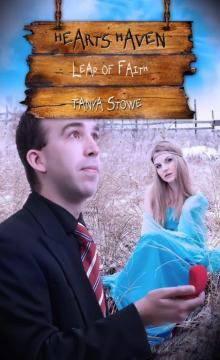 Leap of Faith
Leap of Faith His Bright Light
His Bright Light Mixed Blessings
Mixed Blessings The Numbers Game
The Numbers Game A Gift of Hope: Helping the Homeless
A Gift of Hope: Helping the Homeless Amazing Grace
Amazing Grace Pure Joy
Pure Joy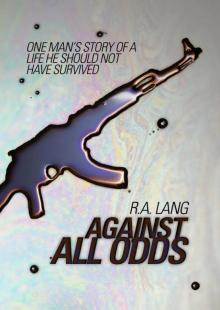 Against All Odds
Against All Odds Sunset in St. Tropez
Sunset in St. Tropez The Ghost
The Ghost Passion's Promise
Passion's Promise Thurston House
Thurston House Matters of the Heart
Matters of the Heart Turning Point
Turning Point Message from Nam
Message from Nam Kaleidoscope
Kaleidoscope The Duchess
The Duchess Past Perfect
Past Perfect The Wedding
The Wedding The Cottage
The Cottage Fall from Grace
Fall from Grace Property of a Noblewoman
Property of a Noblewoman Hotel Vendome (2011)
Hotel Vendome (2011) Toxic Bachelors
Toxic Bachelors Crossings
Crossings Bittersweet
Bittersweet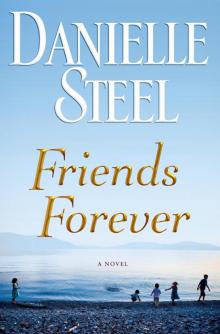 Friends Forever
Friends Forever Family Ties
Family Ties Five Days in Paris
Five Days in Paris The Kiss
The Kiss Daddy
Daddy Vanished
Vanished Safe Harbour
Safe Harbour Rushing Waters
Rushing Waters Miracle
Miracle Palomino
Palomino Now and Forever
Now and Forever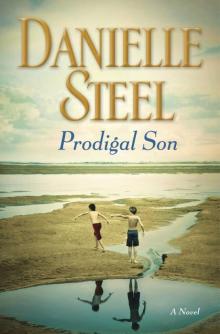 Prodigal Son: A Novel
Prodigal Son: A Novel Going Home
Going Home Heartbeat
Heartbeat Ransom
Ransom Fine Things
Fine Things First Sight
First Sight Big Girl: A Novel
Big Girl: A Novel Finding Ashley
Finding Ashley Lone Eagle
Lone Eagle Coming Out
Coming Out Winners
Winners A Good Woman
A Good Woman Dangerous Games
Dangerous Games One Day at a Time
One Day at a Time Dating Game
Dating Game Blue
Blue Granny Dan
Granny Dan The Sins of the Mother
The Sins of the Mother Happy Birthday: A Novel
Happy Birthday: A Novel The Gift
The Gift Summer’s End
Summer’s End The Mistress
The Mistress A Perfect Life: A Novel
A Perfect Life: A Novel 44 Charles Street
44 Charles Street Zoya
Zoya Family Album
Family Album Rogue
Rogue Accidental Heroes
Accidental Heroes Malice
Malice Echoes
Echoes Until the End of Time: A Novel
Until the End of Time: A Novel Betrayal
Betrayal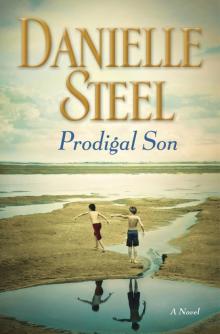 Prodigal Son
Prodigal Son Country
Country Hotel Vendome
Hotel Vendome Impossible
Impossible Remembrance
Remembrance H.R.H.
H.R.H. In His Father's Footsteps
In His Father's Footsteps The Right Time
The Right Time Bungalow 2
Bungalow 2 The Cast
The Cast Wings
Wings Southern Lights
Southern Lights Lightning
Lightning The Apartment
The Apartment Big Girl
Big Girl The House on Hope Street
The House on Hope Street Second Chance
Second Chance Legacy: A Novel
Legacy: A Novel Sisters
Sisters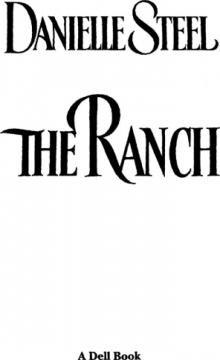 The Ranch
The Ranch Silent Honor
Silent Honor The Good Fight
The Good Fight Betrayal (2012)
Betrayal (2012) Pegasus: A Novel
Pegasus: A Novel